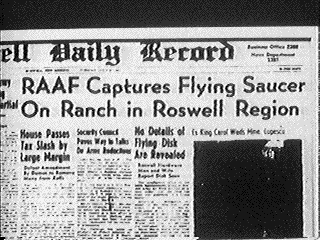In a Popular Science article, SETI director Seth Shostak said he believes we’ll detect alien life in the next twenty years. He listed a few ways in which this may come about. Primarily, he believes that SETI’s improving technology and its anticipated ability to search a million star systems over the next twenty years provides the most likely avenue for success.
He also touched on the idea that an alien race might detect the radio signals we’ve been emitting for decades and send a reply. Minimizing the possibility, he pointed out that only a few tens of thousands of stars have been exposed to our transmissions.
If one employs conservative/pessimistic numbers in the Drake Equation, then life is probably too rare and scattered to expect a reply anytime in the next several thousand years. However, if you plug slightly more optimistic values into the equation, you see a galaxy teaming with life.
This later scenario presents exciting possibilities and is an area that warrants further consideration.
Given the relatively slow speed of light (relative to the size of the galaxy) only a tiny fraction of the Milky Way may know we exist. Arguably the most powerful unnatural radio signals humanity ever sent out were our above ground nuclear detonations. Restricted to 186,000 miles per second, that energy has blazed across the galaxy and covered a whopping 66 light-year radius in the intervening 66 years. That’s a bubble of information roughly 122 light-years across.
Big huh?
Not really, it’s only 3/100,000 of 1 % (0.000003%) of the galaxy.
Difficult to visualize? Imagine you shrunk the galaxy down to the volume of the Superdome. Now imagine you’re up in the nosebleed section. At that scale, picture a four-foot-wide beach ball at mid-field. That sphere, a few centimeters over a meter, would represent the 122 light-year bubble of stars exposed to the energy waves emitted from the planet in 1945. It’s unlikely anything outside of that beach ball even knows we exist.
Our galaxy is not as boxy as a stadium. The Superdome’s interior volume is roughly as tall as it is wide. At 100,000 light-years across and only 1,000 light-years thick, the width-to-height ratio of our galaxy is 100:1 Now picture that four-foot sphere from a mile away instead of the upper-deck. And remember that if you’re not in that bubble, all you hear from its center point is cosmic white noise.
Knowing how small the portion of the galaxy is that may know of our existence, consider this: every day that sphere’s radius grows, its surface grows exponentially. In other words, the potential pool of star systems learning of our existence is growing daily, and at an ever-increasing rate.
Complicating the issue is the time a reply would take to reach us. If a civilization decides to beam an instant reply, it will take just as long for us to receive it as our signal took to get to them.
What if 33 years ago—back when that bubble was the size of a basketball—a relatively advanced civilization in our galactic backyard received the signal and blasted a return message our way? We’ll receive it thirty-three years later (today). Therefore, any instant replies beamed in the last 32+ years are still en route.
And that is only if they decide to reply immediately. Considering the signal they received was a nuclear detonation, they may want to listen for a while. After a few decades of I Love Lucy, Gilligan’s Island, Cheers, Seinfeld, and Lost, they decide, ‘what-the-hell let’s say hello to our wacky neighbors.’
Side note: I often muse over the idea that somewhere there’s an alien race agonizing over who shot JR as they painfully wait for the next season of Dallas to reach their planet. Who knows, there may even be a cultural niche of Elvis Presley fans on some remote rock (there’s some bad news heading their way circa 1976).
People and politicians often ask, ‘Why should we spend money listening for aliens? It’s not like they’ll balance the federal budget for us.’ That’s tantamount to a five-year-old saying, ‘Why should I go to school? There’s nothing they can teach me.’ Setting aside man’s innate curiosity and our desire to answer the burning questions—Are we alone? Is there anybody out there?—there are more practical reasons to search.
In regards to social and scientific development, we are assuredly babes in the galactic woods. Any data gathered from alien contact would probably be more enlightening than Pythagoras’ Theorem. Spanning decades, it would be an inefficient discussion, but likely, we would be the prime beneficiary of that interaction. Thus, a tiny-tiny-tiny-minuscule investment (relative to GDP) lands us invaluable knowledge.
In Carl Sagan’s Contact, aliens send us blueprints for a wormhole generator. But saving that, what if they merely said, ‘Hello, here’s the perfect mouse trap’ or ‘free energy and the cure to world hunger’?





